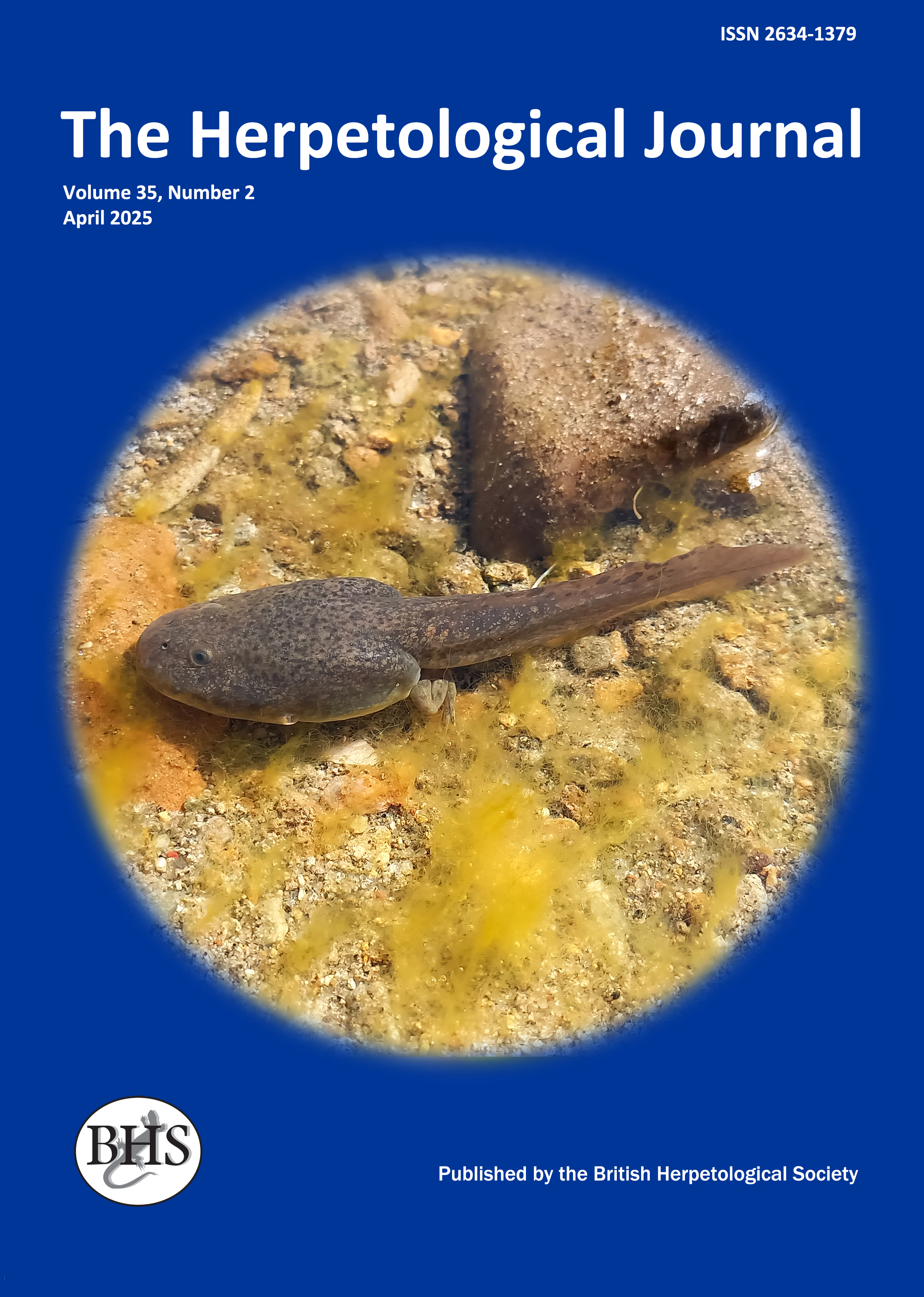
The Herpetological Journal
The Herpetological Journal is the Society's prestigious quarterly scientific journal. Articles are listed in Biological Abstracts, Current Awareness in Biological Sciences,Current Contents, Science Citation Index, and Zoological Record.
ISSN 0268-0130
2021 Impact Factor from Clarivate for the Herpetological Journal is 1.194, an increase of 0.332 from 2020.
pdf 08. Reproductive ecology and diet of the fossorial snake Phalotris lativittatus in the Brazilian Cerrado
985 downloads
Open Access
pp. 49-57
Authors: Braz, Henrique B.; Kasperoviczus, Karina N. & Almeida-Santos, Selma Maria
Abstract: Fossorial snakes have attracted little scientific attention in studies of natural history, despite their relevance to capture the range of evolutionary-ecological strategies of snakes. In this study, we examined 62 preserved specimens of Phalotris lativittatus (a member of the fossorial and poorly studied Elapomorphini tribe) to obtain information about sexual dimorphism, reproduction, seasonal activity and diet. Males were smaller than females but had longer tails, larger heads and were more heavy-bodied. Females attained sexual maturity at larger body sizes than males. Reproduction is seasonal in both sexes. Vitellogenesis started in mid-autumn, and peaked from late spring to summer. Oviductal eggs and oviposition were recorded from late spring to early summer, while hatchings occurred from late summer to autumn. Clutch size was low, a recurrent trait in fossorial snakes. Spermatogenesis began in autumn, peaked during spring and testicular quiescence occurred in summer. The ductus deferens contained sperm only in spring, when the sexual segment of the kidneys showed dense secretory granules and males were more active. Thus, we suggest that mating is likely to occur in spring. Diet is specialised in amphisbaenids, and no evidence of ontogenetic shift was detected. This is the first quantitative study on the ecology of an Elapomorphini species.
Keywords: BODY SIZES, ACTIVITY PATTERNS, SEXUAL DIMORPHISM, REPRODUCTIVE CYCLES, ELAPOMORPHINI, FOOD HABITS

